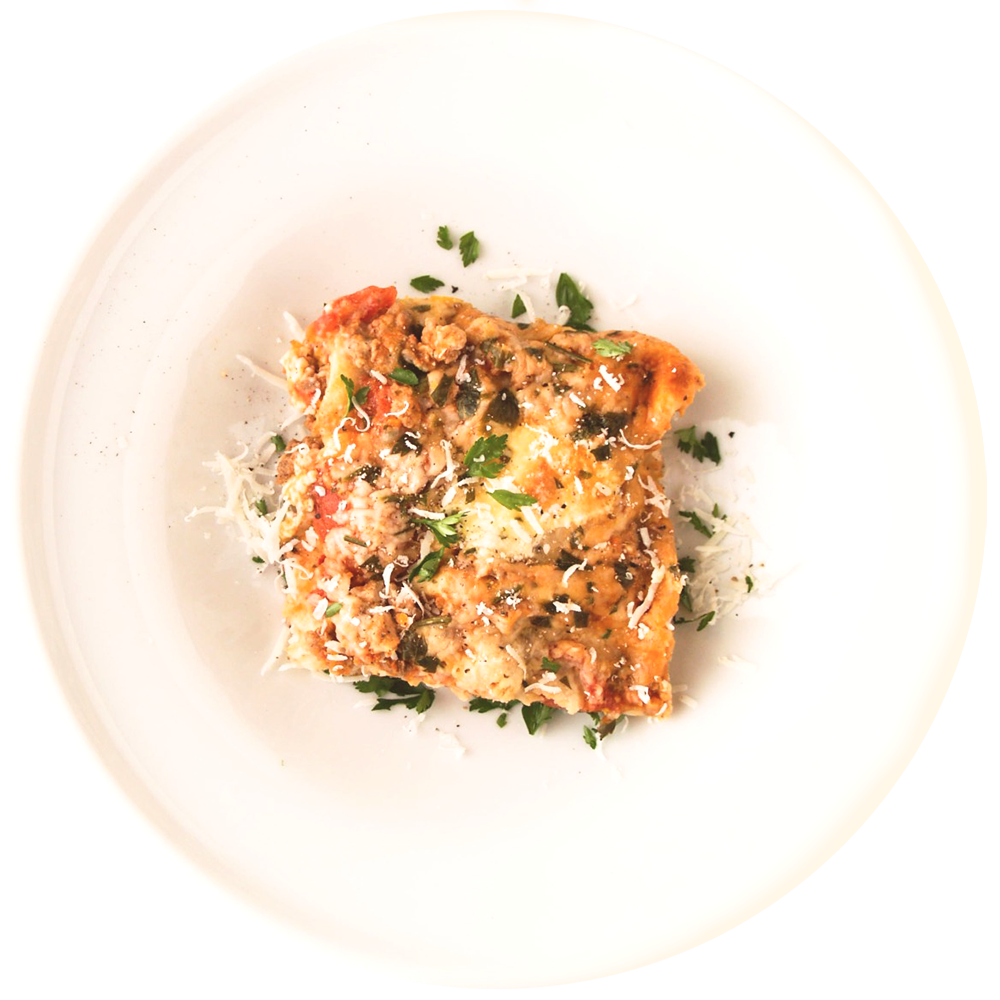The flour is sifted, combinedwith eggs or just water, and kneaded for a long time until a firm, smooth dough forms. The dough is left to rest, then rolled out into a relatively thin sheet from which various shapes are cut, according to the local custom. In Friuli-Venezia Giulia, the dough is wrapped in a damp dish towel and left to rest for a day before it is rolled out. The shape of factory-made versions varies from producer to producer. Lasagne are boiled in plenty of salted water, sauced, and baked.
Lasagne are indeed one of the earliest types of pasta. Lasagne are rectangular sheets of pasta dough, and are always layered with a sauce to make the familiar baked dish.
Lasagne
cooking time: 15 min.
OVAL FORM FEE FORMS
One proceeds by way of the uniformly compressed circle, of which the oval is a result, to free basic planes. These are, to be sure, without angles but, just as is possible in the case of angular forms, they also pass beyond the limits of geometric forms. Here, as well, the fundamental principles will remain unchanged and will be recognizable behind the most complex forms.

